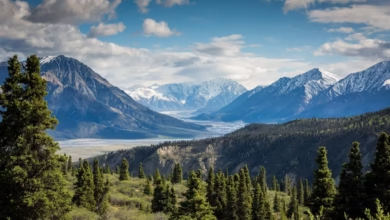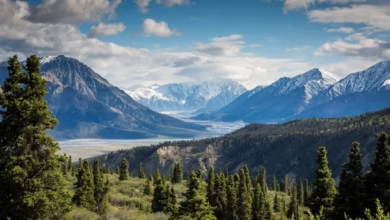Understanding Oil Reserves: Analyzing Proven, Probable, and Potential Categories in Today’s Global Oil Market

The dynamics of oil reserves play a crucial role in shaping the global oil market, influencing everything from prices to energy security. With the world’s dependence on crude oil continuing to drive demand, understanding the categories of oil reserves—proven, probable, and potential—is essential for both investors and policymakers. As we delve into the complexities of oil reserves, we will explore how these classifications affect oil market trends and prices, and the implications for the global oil trade. Furthermore, as the industry faces increasing scrutiny over its environmental impact, we will examine the future of oil, considering alternatives such as biofuels and the role of emerging technologies in oil refining and transportation. By addressing the geopolitical aspects and the challenges surrounding oil consumption and storage, this article aims to provide a comprehensive overview of the current landscape and future outlook for oil reserves and their significance in the world economy.
- 1. Understanding Oil Reserves: Proven, Probable, and Potential Categories
- 2. The Impact of Oil Reserves on Global Oil Market Trends and Prices
- 3. Exploring the Future of Oil: Environmental Considerations and Alternatives to Crude Oil
1. Understanding Oil Reserves: Proven, Probable, and Potential Categories
Understanding oil reserves is crucial for navigating the complexities of the global oil market. Oil reserves are classified into three main categories: proven, probable, and potential. Each category provides insight into the accessibility and reliability of crude oil supplies, which significantly impacts oil prices and energy security.
Proven reserves refer to quantities of crude oil that can be extracted with a high degree of certainty using current technologies and under existing economic conditions. These reserves are critical for oil refining processes and are key drivers of oil market trends. According to OPEC, proven oil reserves are essential for maintaining stable oil supply chains and ensuring sufficient oil storage capacity to meet global oil consumption needs.
Probable reserves, on the other hand, are those that are likely to be recoverable but come with a greater degree of uncertainty. This category often includes reserves that require advanced oil technologies for extraction, such as offshore drilling and shale oil production. Investors in oil must consider the implications of probable reserves on oil price hedging strategies, as fluctuating oil prices can impact the viability of these resources.
Potential reserves are the most speculative category, encompassing resources that have not yet been discovered or confirmed. These reserves could play a significant role in the future of oil exploration, especially in new frontiers like oil sands and deepwater locations. As the global oil trade evolves, the discovery of potential reserves could reshape oil geopolitics, influencing relationships between oil-producing nations and impacting oil alternatives, including biofuels and natural gas.
Understanding these categories not only aids in oil investing decisions but also highlights the environmental impact of oil extraction and consumption. As society shifts towards more sustainable energy practices, awareness of oil regulation and compliance becomes increasingly important. Balancing the need for oil with the push for cleaner energy solutions is essential in securing a sustainable energy future.
In conclusion, the classification of oil reserves into proven, probable, and potential categories provides a comprehensive framework for analyzing the current state and future prospects of the oil industry. This understanding is vital for stakeholders across the spectrum, from oil field services to policymakers, as they navigate the complexities of oil transportation, refining, and the broader energy landscape.
2. The Impact of Oil Reserves on Global Oil Market Trends and Prices
The dynamics of oil reserves significantly influence global oil market trends and prices. As the foundation of the crude oil supply, proven, probable, and potential reserves play a crucial role in determining the balance between supply and demand. When the market anticipates an increase in oil reserves, particularly from regions rich in shale oil or offshore drilling sites, it can lead to a downward pressure on oil prices. Conversely, unexpected declines in reserves or geopolitical tensions affecting oil-producing nations can spike prices, creating volatility in the oil market.
In recent years, OPEC's decisions regarding production levels have also been heavily influenced by the status of oil reserves. By managing the supply of oil, OPEC aims to stabilize oil prices, ensuring profitability for member countries while also considering the broader implications for global oil trade and energy security. Increased oil exploration and advancements in oil technologies have allowed access to previously untapped reserves, such as oil sands and deepwater fields, impacting overall oil consumption patterns and the downstream oil sector.
Moreover, as countries strive for energy diversification, the rise of biofuels and oil alternatives reflects a growing concern over the environmental impact of oil and the need for more sustainable energy solutions. This shift affects oil storage, transportation, and compliance with evolving environmental regulations. The oil market is further complicated by oil geopolitics, where nations leverage their reserves for strategic advantages in international relations.
Investors keen on oil investing must navigate these complexities, employing strategies like oil price hedging to mitigate risks associated with fluctuating market conditions. Additionally, the intertwining of oil and natural gas markets, along with the development of efficient oil supply chains and oil field services, underscores the interconnectedness of various sectors within the global energy landscape. As the world continues to grapple with the implications of oil consumption and its environmental ramifications, the future of oil reserves will remain a critical factor in shaping oil market trends and prices.
3. Exploring the Future of Oil: Environmental Considerations and Alternatives to Crude Oil
As we explore the future of oil, it is essential to consider the environmental implications and the growing need for alternatives to crude oil. The oil industry, while a significant contributor to global energy supply, is also a primary source of greenhouse gas emissions. This environmental impact of oil has prompted a shift in focus toward sustainability and energy security. The global oil trade is increasingly influenced by these considerations, as countries and corporations seek to balance economic growth with ecological responsibility.
The oil market trends indicate that demand for crude oil is likely to face pressure from environmental regulations and public sentiment favoring cleaner energy sources. In response, the industry is investing in technologies aimed at reducing the carbon footprint associated with oil refining and transportation. Innovations in oil field services are emerging, focusing on enhancing efficiency while minimizing ecological damage.
Alternatives to crude oil, such as biofuels and natural gas, are gaining traction as viable substitutes that can help reduce reliance on traditional oil consumption. The development of oil alternatives not only addresses environmental concerns but also aligns with the geopolitical dynamics of oil. Countries rich in shale oil and oil sands are exploring ways to diversify their energy portfolios, reducing their vulnerability to fluctuating oil prices and market instability.
As we move forward, the role of OPEC and other oil-producing nations will be crucial in shaping the future of oil. Their decisions regarding oil supply chains and production levels will significantly influence oil prices and the global energy landscape. Furthermore, the shift toward renewable energy sources and improved oil compliance and regulation can enhance the sustainability of oil transportation and storage practices.
In conclusion, the future of oil is intricately linked to environmental considerations and the pursuit of alternatives to crude oil. As the industry adapts to these changes, it is imperative for oil investors and stakeholders to remain informed about the evolving landscape, ensuring that strategies are aligned with both economic and environmental goals. The transition to a more sustainable energy future requires collaboration across the oil sector, regulatory bodies, and emerging technologies, paving the way for a more resilient and responsible global energy framework.
In summary, understanding the different categories of oil reserves—proven, probable, and potential—is essential for grasping the complexities of the global oil trade and its influence on oil prices and market trends. As we navigate through the intricate dynamics of oil consumption and energy security, it becomes clear that the impact of these reserves extends far beyond mere numbers. The interplay between oil geopolitics, OPEC decisions, and advancements in oil technologies shapes the future of crude oil, while concurrently raising significant environmental considerations.
As we explore alternatives such as biofuels and the potential of shale oil and oil sands, the transition towards more sustainable energy sources becomes increasingly crucial. The environmental impact of oil extraction and transportation cannot be overlooked, as it plays a vital role in shaping public policy and oil regulation. Furthermore, the ongoing development of oil field services and infrastructure, including oil pipelines and storage, will influence oil supply chains and market stability.
The future of oil is fraught with challenges and opportunities, making oil investing a careful balancing act amid fluctuating prices and compliance requirements. As the global community seeks to mitigate the environmental consequences of fossil fuels, a comprehensive understanding of oil reserves will remain critical in navigating the evolving landscape of energy production and consumption. Ultimately, the path forward will require a collaborative approach that embraces innovation while addressing the pressing need for sustainability in our energy systems.
References:
[Include your references here]




